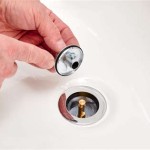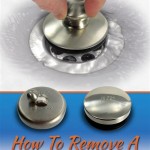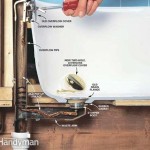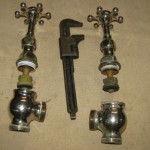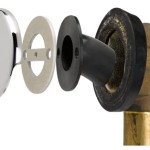Standard Bathtub Size In Meters: A Comprehensive Guide
When planning a bathroom renovation or new construction, selecting the right bathtub is a crucial decision. Beyond aesthetics and style, understanding standard bathtub sizes is paramount to ensure comfort, functionality, and proper integration with the overall bathroom design. While bathtub dimensions are often discussed in inches, converting these measurements to meters provides a clearer understanding for international audiences and projects where metric measurements are preferred. This article delves into the standard bathtub sizes in meters, exploring the various dimensions available and factors that influence the best choice.
The dimensions of a bathtub are typically defined by its length, width, and depth. Length refers to the distance from the inside of one end of the bathtub to the other. Width is the distance from one side of the bathtub's interior to the other. Depth, sometimes referred to as height, is the distance from the bathtub's bottom (interior) to the top of the rim, excluding any overflow drain height. These dimensions significantly impact the bathing experience, influencing legroom, shoulder space, and the overall feeling of immersion. A bathtub deemed "standard" often adheres to a range of common sizes, although variations exist based on style and manufacturer.
Understanding Standard Bathtub Length in Meters
The length of a bathtub is often the most important dimension to consider, as it directly affects the bather's comfort. Standard bathtub lengths, when converted to meters, generally fall between 1.52 meters to 1.83 meters. This corresponds to the 60-inch to 72-inch range commonly cited in imperial measurements. A 1.52 meter (60-inch) bathtub is frequently found in smaller bathrooms or apartments where space is limited. This length may be adequate for some individuals, particularly those of shorter stature, but taller individuals might find it constricting.
A 1.68 meter (66-inch) bathtub provides a more comfortable experience for most adults. This length offers a balance between space efficiency and ergonomic design. For larger bathrooms, a 1.83 meter (72-inch) bathtub allows for maximum stretching and immersion. This extended length suits taller individuals or those who prefer a more luxurious bathing experience. Beyond these "standard" lengths, some manufacturers offer even longer bathtubs, exceeding 1.83 meters, further catering to specific needs and preferences. These longer models are frequently seen in high-end bathrooms designed for ultimate relaxation.
When choosing a bathtub length, it's crucial to consider the user's height and personal preference. A simple way to assess the appropriate length is to measure the user's height and add a few centimeters to allow for comfortable reclining without feeling cramped. It is also vital to account for the bathroom's layout and available space. A bathtub that is too long can obstruct doorways, interfere with other fixtures, or make the bathroom feel crowded. Conversely, a bathtub that is too short might not provide the desired level of comfort and relaxation. Professional consultation with a bathroom designer or contractor can help determine the optimal bathtub length based on individual needs and spatial constraints.
Standard Bathtub Width and Depth in Meters
While length gets much of the attention, the width and depth of a bathtub are equally important for overall comfort and functionality. Standard bathtub widths typically range from 0.76 meters to 0.81 meters (30 inches to 32 inches). A width of 0.76 meters is common in smaller, more compact bathtub models, while a width of 0.81 meters provides slightly more room for movement and comfort. Some larger, more luxurious bathtubs may exceed 0.81 meters in width, offering a truly spacious bathing experience.
Bathtub depth, as measured from the bottom of the interior to the top of the rim, typically ranges from 0.38 meters to 0.43 meters (15 inches to 17 inches). A depth of 0.38 meters might be standard for basic models, while a depth of 0.43 meters allows for a deeper, more immersive bathing experience. It's essential to consider the depth in relation to the bathtub's overall length and width. A very long and wide bathtub with a shallow depth might not provide the desired level of soaking comfort. Similarly, a deep bathtub that is too short or narrow can feel cramped and uncomfortable.
When selecting a bathtub's width and depth, consider the user's body type and bathing preferences. Wider bathtubs are generally more comfortable for larger individuals, while deeper bathtubs offer a more immersive soaking experience. Accessibility is also a crucial consideration. A bathtub that is too deep might be difficult for individuals with mobility issues to enter and exit safely. Features like grab bars and non-slip surfaces can enhance safety and accessibility. Thorough consideration of these factors will contribute to selecting a bathtub that is not only comfortable but also safe and functional for all users.
Impact of Bathtub Style on Standard Metric Dimensions
The style of a bathtub can significantly influence its dimensions and overall footprint. Alcove bathtubs, which are installed against three walls, often adhere to standard lengths of 1.52 meters, 1.68 meters, and 1.83 meters, with widths ranging from 0.76 meters to 0.81 meters. These bathtubs are designed to fit seamlessly into standard bathroom layouts, maximizing space efficiency.
Freestanding bathtubs, on the other hand, offer more flexibility in terms of design and placement. While they also come in standard lengths, widths, and depths, the overall dimensions can vary considerably depending on the style and shape. For example, a clawfoot bathtub, a classic freestanding style, might have slightly different dimensions compared to a modern, minimalist freestanding tub. The overall footprint of a freestanding bathtub, including the space required for movement around it, should be carefully considered when planning the bathroom layout.
Corner bathtubs, designed to fit into a corner of the bathroom, typically have a triangular or pentagonal shape. Their dimensions are often expressed in terms of the length of each side of the triangle or pentagon. While corner bathtubs can save space in smaller bathrooms, they might not be as comfortable for taller individuals due to their unique shape. Soaking tubs, which are designed for deep immersion, often have greater depths than standard bathtubs. These tubs may also be wider or longer to accommodate the bather's body comfortably. When selecting a bathtub style, it is thus important to consider how the style will impact the tub's overall dimensions and how those dimensions will interact with individual needs including space availability and user ergonomics..
Whirlpool bathtubs, which include jets for massage therapy, may also have slightly different dimensions compared to standard bathtubs. The mechanical components required for the jets can add to the overall size of the tub. Walk-in bathtubs, designed for individuals with mobility issues, often have smaller overall dimensions to facilitate easy entry and exit. These bathtubs typically include a watertight door and a built-in seat. The selection of a bathtub style should involve careful consideration of the available space, the user's needs, and the desired aesthetic.
In conclusion, understanding standard bathtub sizes in meters is essential for selecting the right bathtub for a bathroom renovation or new construction. The length, width, and depth of the bathtub significantly impact the bathing experience, and the selected style can influence its overall dimensions. Careful consideration of these factors will ensure the selection of a bathtub that is not only comfortable and functional but also safe and aesthetically pleasing.

Standard Bath Size Length Width Dimensions

What Size Is A Small Bath Ideal Baths For Bathrooms

Image Result For Typical Bathtub Measurements Small Bathroom Dimensions

What Are The Sizes Of Household Bathtubs Circular Bathtub Size Common Specifications

Duravit D Code Wanna Prostokątna 170x75cm Do Zabudowy 700100 00 0 0000 Bathtub Sizes Dimensions

Alfi Brand Ab9952bm 67 Black White Matte Rectangular Solid Surface Resin Soaking Bathtub

Hcg Bathtub Recessed Type F1700 Acrylic 1 7m With Knob Ttype Drain Sys

Standard Walk In Tub Sizes 2024 Size Guide Modernize

Typical Types Of Bathtubs

Walk In Tub Dimensions Bathtub Specifications Kohler Bath
Related Posts


